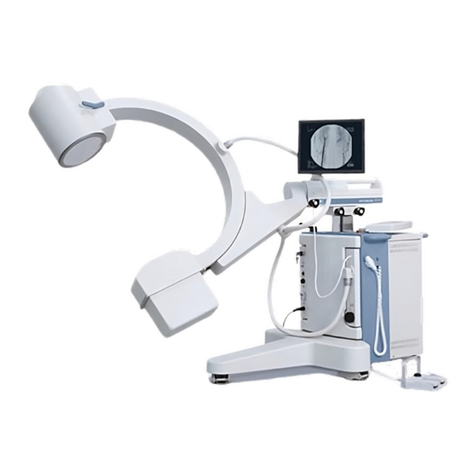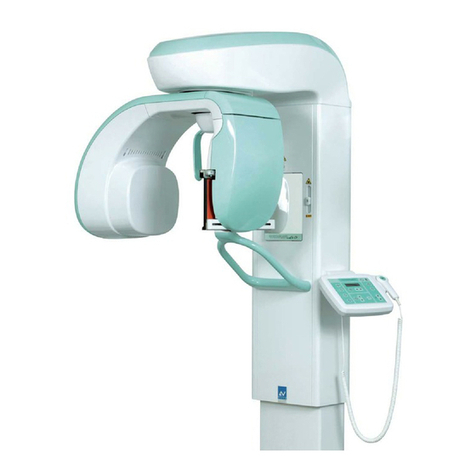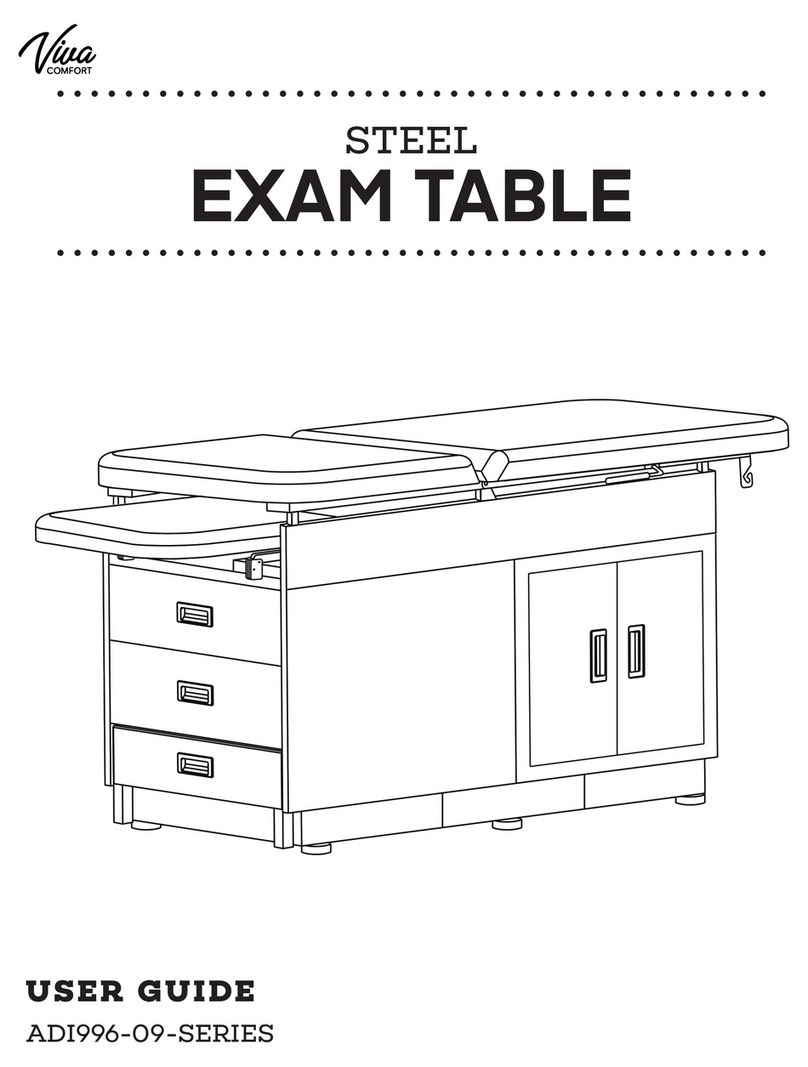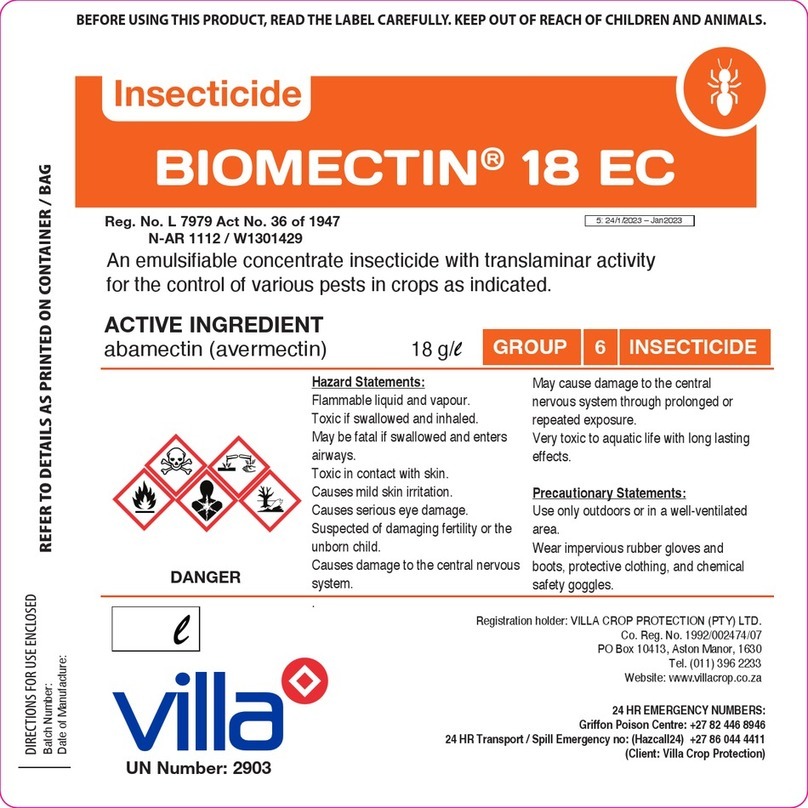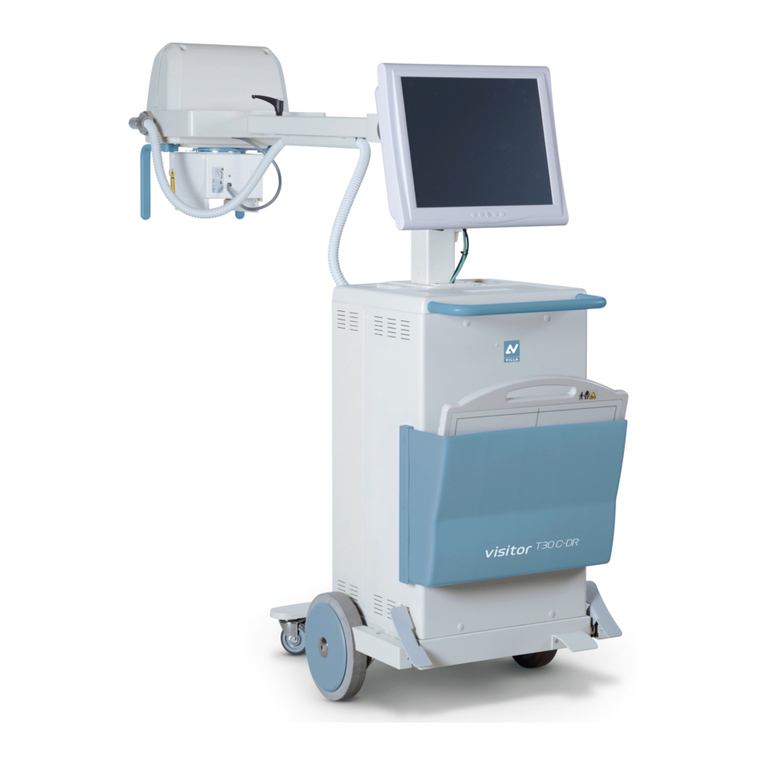8.2.5.5.
E756: PFC failure ........................................................... 8-22
8.2.5.6.
E755: Alarm “Backup timer intervention” /
E758: Alarm “No X-ray” / E759: Alarm “Unexpected
emission”........................................................................ 8-23
8.2.5.7.
E760: Alarm "NO RX button command"........................... 8-24
8.2.5.8.
E762: Alarm "NO X-ray feedback" ................................... 8-24
8.2.5.9.
E774: RX button not pressed .......................................... 8-25
8.2.5.10.
E775: RX button released during the emission ................ 8-25
8.2.6.
Errors with code E800 and E801.................................................... 8-26
8.2.6.1.
E800: Timeout on CAN activation for vertical motor......... 8-26
8.2.6.2.
E801: ON/OFF command for vertical motor not
changed on planned time................................................ 8-26
8.2.7.
Errors with code E850, E851 and E852 .......................................... 8-27
8.2.7.1.
E850: More than one button pressed during power on..... 8-27
8.2.7.2.
E851: Column up or Column down pressed at
power on ........................................................................ 8-27
8.2.7.3.
E852: One key pressed during the movement .................. 8-28
8.3.
Service programs descriptions ........................................................... 8-29
8.3.1.
Accessing the service programs ...................................................... 8-30
8.3.2.
General information on the use of keyboard.................................... 8-31
8.3.3.
Password 92: Configuration menus ................................................ 8-32
8.3.3.1.
Language........................................................................ 8-33
8.3.3.2.
Date-Time set ................................................................. 8-34
8.3.3.3.
Disable X-ray.................................................................. 8-35
8.3.3.4.
Manage pano opt. ........................................................... 8-36
8.3.3.5.
Manage Impl opt............................................................. 8-37
8.3.3.6.
Tooth style...................................................................... 8-38
8.3.3.7.
Digital mode ................................................................... 8-38
8.3.3.8.
Collimator setup type...................................................... 8-39
8.3.3.9.
Collimator technology ..................................................... 8-40
8.3.3.10.
STF setup type ............................................................... 8-41
8.3.3.11.
Sensor handling ............................................................. 8-42
8.3.3.12.
Column version .............................................................. 8-42
8.3.3.13.
TSEVO IP address........................................................... 8-43
8.3.3.14.
TSEVO NET mask........................................................... 8-43
8.3.3.15.
Sensor 1 IP address ........................................................ 8-43
8.3.3.16.
Sensor 2 IP address ........................................................ 8-43
8.3.3.17.
Enable PAN plus............................................................. 8-44
8.3.3.18.
Pano order...................................................................... 8-45
8.3.4.
Password 118: Axis alignment menu .............................................. 8-46
8.3.4.1.
Rotation zero .................................................................. 8-48
8.3.4.2.
Y Axis zero...................................................................... 8-49
8.3.4.3.
Y Axis zero Evo ............................................................... 8-50
8.3.4.4.
Y Axis zero BiteWing ....................................................... 8-51
8.3.4.5.
Cassette zero .................................................................. 8-51
8.3.4.6.
Primary collimator PAN ................................................... 8-52
8.3.5.
Password 124: CEPH settings......................................................... 8-53
8.3.5.1.
Enable sensor................................................................. 8-54
8.3.5.2.
Rotation offset ................................................................ 8-55
8.3.5.3.
CEPH secondary collimator zero...................................... 8-56

